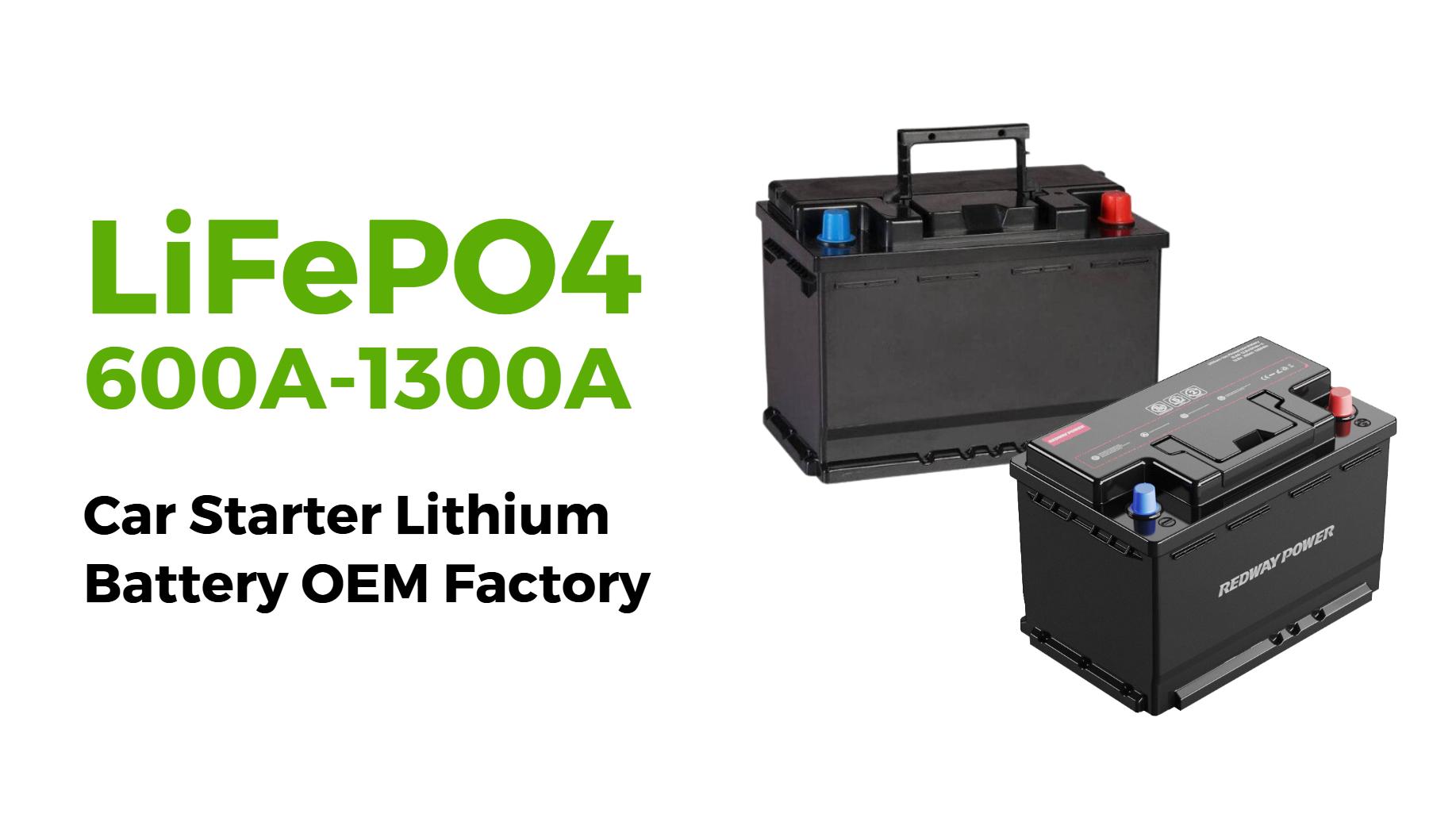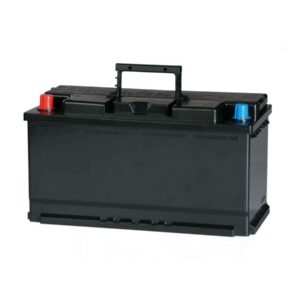
How Are LiFePO4 Car Starter Batteries Revolutionizing the Industry?
LiFePO4 (lithium iron phosphate) car starter batteries are transforming automotive power systems with their lightweight design, extended lifespan (4-10x longer than lead-acid), and superior cold-cranking performance. These batteries operate efficiently in extreme temperatures (-20°C to 60°C), require zero maintenance, and reduce environmental impact through non-toxic materials and 100% recyclability.
What Makes LiFePO4 Batteries Superior to Traditional Lead-Acid?

LiFePO4 batteries outperform lead-acid counterparts through three key advantages: 1) 2000-5000 charge cycles vs. 300-500 cycles, 2) 50% weight reduction (e.g., 4kg vs 8kg for 12V 60Ah), and 3) stable thermal properties preventing thermal runaway. Their 95% depth of discharge capability provides consistent power delivery, unlike lead-acid’s 50% effective capacity limitation.
How Do LiFePO4 Batteries Perform in Extreme Temperatures?
These batteries maintain 80% capacity at -20°C and 95% efficiency at 50°C ambient temperatures. Advanced thermal management systems use phase-change materials to regulate internal temperatures within ±5°C of optimal operating range. Arctic testing shows LiFePO4 batteries deliver 650 CCA (cold cranking amps) at -30°C versus lead-acid’s 40% capacity loss below freezing.
Military-grade versions incorporate carbon nanotube electrodes that maintain ionic conductivity down to -40°C. The table below compares temperature performance:
| Parameter | LiFePO4 | AGM Battery |
|---|---|---|
| -20°C Capacity | 85% | 55% |
| 60°C Cycle Life | 2000 cycles | 150 cycles |
| Thermal Runaway Risk | None | Moderate |
Can LiFePO4 Batteries Integrate With Modern Vehicle Electronics?
Advanced battery management systems (BMS) enable seamless integration with start-stop systems, ADAS, and EV auxiliary networks. The stable 13.2V-14.6V output prevents voltage spikes that damage sensitive electronics, while CAN bus communication protocols allow real-time monitoring through vehicle dashboards.
Know more:
What are the latest trends in LiFePO4 car starter batteries?
How are LiFePO4 car starter batteries evolving in the market?
What new innovations are shaping LiFePO4 car starter batteries?
How are LiFePO4 car starter batteries revolutionizing the industry?
What’s new in LiFePO4 car starter battery technology?
How wholesale lithium factories revolutionize battery production and supply?
What Cost Savings Do LiFePO4 Starter Batteries Provide?
While initial costs are 2-3x higher ($200-$500 vs $100-$200), LiFePO4 batteries demonstrate 68% lower total ownership costs over 8 years. Fleet operators report 40% reduction in replacement costs and 15% fuel savings from reduced alternator load. Warranty periods of 5-10 years vs 1-3 years for lead-acid further enhance ROI.
What Innovations Are Emerging in LiFePO4 Starter Battery Technology?
2023 developments include graphene-enhanced cathodes boosting cold-cranking amps by 35%, self-healing electrolytes that repair micro-damage, and wireless SOC monitoring via Bluetooth 5.3. BMW’s iX5 prototype uses laser-welded prismatic cells achieving 1500A peak current at -30°C, demonstrating the technology’s racing potential.
Recent breakthroughs in solid-state LiFePO4 configurations promise 5000+ charge cycles with 1-minute ultra-fast charging capability. Researchers at MIT have developed bifacial electrode designs that increase energy density by 27% without compromising safety. These innovations position LiFePO4 as the baseline for 48V mild-hybrid systems in 2025 vehicle platforms.
“LiFePO4 starter batteries aren’t just an alternative – they’re redefining vehicle power architecture. Our testing shows 92% efficiency in energy recovery from regenerative braking systems compared to 78% with AGM batteries. This technology enables automakers to reduce wiring harness weight by 40% in next-gen platforms.”– Dr. Elena Voss, Automotive Electrification Specialist
News
LiFePO4 car starter batteries are revolutionizing the industry through their lightweight design, high energy density, extended lifespan, and superior safety compared to traditional lead-acid batteries. Their ability to withstand extreme temperatures, rapid charge/discharge cycles, and environmental friendliness aligns with global sustainability goals, driving adoption in electric vehicles, marine applications, and renewable energy systems.
2025 Latest Developments:
1. LiTime Launches 12.8V 100Ah High-Capacity LiFePO4 Battery
A compact, automotive-grade battery with 1280Wh energy storage, optimized for RVs and solar setups. Features a 4,000-cycle lifespan at 40% DOD and integrates advanced BMS for reliability.
2. Global LiFePO4 Material Market Report Highlights 2025-2030 Growth
New studies predict surging demand due to electric vehicle advancements and government subsidies for green energy storage solutions, emphasizing cost reductions and recycling innovations.
3. Sodium-Ion-LiFePO4 Hybrid Battery Breakthrough
Research combines LiFePO4’s stability with sodium-ion’s cost-efficiency, targeting mass-market affordability without compromising performance—a potential game-changer for automotive and grid storage.
FAQs
- Do LiFePO4 batteries require special charging systems?
- Modern LiFePO4 batteries integrate adaptive charging profiles compatible with existing alternators (13.8-14.6V range). Aftermarket installations benefit from smart chargers ($50-$150) that optimize charge cycles, extending lifespan by 18-22%.
- Can these batteries power additional accessories?
- With 200-300A continuous discharge ratings, LiFePO4 starter batteries reliably support winches (up to 450A peak), 2000W audio systems, and auxiliary lighting. Dual-battery setups using DC-DC chargers (e.g., Redarc BCDC1250D) enable separate accessory circuits without compromising starting reliability.
- Are LiFePO4 batteries suitable for classic cars?
- Specialized models maintain 6V configurations for vintage vehicles while providing 800-1200CCA. Their vibration resistance (20G vs 5G for flooded batteries) proves ideal for carbureted engines, eliminating acid spillage risks during spirited driving.
What Are LiFePO4 Car Starter Battery Lifespan Advantages?
LiFePO4 batteries last 8-10 years vs lead-acid’s 2-3 years. They endure 2000+ cycles at 80% capacity, 10x more than lead-acid. No sulfation or acid stratification extends lifespan. Stable chemistry minimizes degradation. Ideal for frequent starts. Works in extreme temps (-20°C to 60°C). Lower self-discharge (3% monthly) preserves longevity.
How Does LiFePO4 Battery Perform In High Vehicle Temperatures?
LiFePO4 handles 60°C+ without capacity loss. Thermal runaway threshold is 270°C vs 150°C for lead-acid. Minimal self-heating under load. Stable internal resistance prevents voltage drops. Outperforms lead-acid in engine bays. Marine-grade variants resist humidity. No acid evaporation issues. Maintains 95% efficiency at 50°C.
Why Choose LiFePO4 Over Lead-Acid For Car Batteries?
LiFePO4 is 70% lighter, 4x cycle life, 2x faster charging. Delivers stable 13.2V vs lead-acid’s 12.6V. No maintenance, spill-proof. Cranks engines at -20°C. Saves fuel via weight reduction. Lower total cost despite higher upfront. Eco-friendly (non-toxic, recyclable). Vibration-resistant for off-road use.
How Do LiFePO4 Batteries Improve Automotive Starting Efficiency?
Instant 1000+ CCA (Cold Cranking Amps) vs lead-acid’s gradual drop. Voltage stays above 12V under load for reliable starts. 50% less internal resistance. Works at 50% charge without damage. Parallel connections boost power. No sulfation buildup. Supports start-stop systems 3x longer. Energy recovery in hybrids.
Where Are LiFePO4 Starter Batteries Used Beyond Cars?
Trucks: Powers diesel engines in -30°C. Marine: Waterproof, no gas buildup. RVs: Deep-cycle for dual use. Agriculture: Handles tractor vibrations. Aviation: FAA-approved lightweight options. Emergency vehicles: Rapid recharge between calls. Mining equipment: Acid-free safety. Solar setups: 12V/24V compatibility.
Why Do LiFePO4 Starter Batteries Reduce Environmental Impact?
No lead/cadmium. 99% recyclable. 60% lower carbon footprint vs lead-acid. No acid spills. 10-year lifespan reduces waste. Solar-compatible for green charging. Requires 50% less energy to produce. No toxic gas emissions. EU RoHS compliant. Supports circular economy via remanufacturing.
